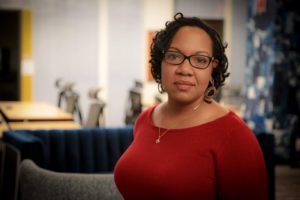New Jersey is America, at least in regards to minority students’ lack of access to higher-level coursework, qualified teachers, and fair disciplinary procedures. From today’s New York Times:
Racial minorities are more likely than white students to be suspended from school, to have less access to rigorous math and science classes, and to be taught by lower-paid teachers with less experience, according to comprehensive data released Friday by the data released Friday by the Department of Education’s Office for Civil Rights…
In high school, the study found that while more than 70 percent of white students attend schools that offer a full range of math and science courses — including algebra, biology, calculus, chemistry, geometry and physics — just over half of all black students have access to those courses. Just over two-thirds of Latinos attend schools with the full range of math and science courses, and less than half of American Indian and Native Alaskan students are able to enroll in as many high-level math and science courses as their white peers.
Let’s look at NJ’s disparity in access to Advanced Placement courses, which signify higher-level coursework and college-readiness. Chose a county. In Burlington, students lucky enough to have the means to live in Moorestown, which is uniformly white and high-income, have access to 20 A.P. courses, including Chinese Language, Latin-Vergil, and Microeconomics. Nine miles away in Willingboro, the almost all black enrollment at the district high school has access to seven AP courses. In Moorestown, according to recent DOE data, 307 students received a score of 3 or higher on end-of-year AP tests, a measure of proficiency. In Willingboro, four students received a grade of three or higher.
In Mercer County, students at Trenton Central High School, almost all black or Hispanic, have access to two AP courses: history and biology. Among the students there, 1.9% took an AP course in 2012-2013. Down the road at West Windsor-Plainsboro North High School, students, almost all white or Asian, choose from a menu of 17 AP courses. 69.4% of them signed up last year. .
At Lakewood High School in Ocean County, not a single AP course is available to students, who are Hispanic or black. At Toms River East High School, where 88% of the students are white, students choose from12 AP courses. Twenty-one percent take a course and 76% of that cohort get a 3 or higher.
“We want to have a situation in which students of color — and every student — has the opportunity and access that will get them into any kind of STEM career that takes their fancy,” said Claus von Zastrow, director of research for Change the Equation, a nonprofit that advocates improved science, technology, engineering and math education, or STEM, in the United States. “We’re finding that in fact a huge percentage of primarily students of color, but of all students, don’t even have the opportunity to take those courses. Those are gateways that are closed to them.”




